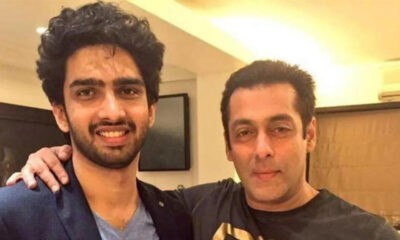As they go to computerized gadgets, youngsters face upgraded digital lewd behaviour.
KEY POINTS :
- Police and child safety experts say while sexual abuse over social media is rampant, only a small percentage of children can stand up against the abusers, and even fewer go on to report them to the authorities.
- As they turn to digital devices, children face enhanced cyber sexual harassment.
At the point when a 14-year-old young lady’s folks in Delhi’s Shahdara region gotten her a cell phone a year ago to work with her online classes, an aftereffect of the limitations forced on schools to control the spread of the pandemic, little did they understand the conceivable web-based media misuse she might be exposed to.
Over the following year, classes during school hours and web-based media extravagance for a significant part of the leftover time frame were followed. She accumulated many devotees on her web-based media locales, gotten to know many different clients and nonchalantly visited with a couple of them.
Among those numerous clients she had fortified within recent months was an individual with a criminal bowed. When his proposition of sexual relations with the young lady was turned down, he harassed her by following her via web-based media destinations by making various phoney records, shooting harmful messages from various characters, lastly, taking steps to transform and transfer her pictures via web-based media locales.
For three long days, the young lady bore the dangers, expecting that they would disappear on the off chance that she didn’t react. At the point when she could take it no more, she assembled the fortitude to trust in her folks, who promptly moved toward the nearby police.
Regardless of him utilizing VPN to cover his online certifications, the police had the option to capture the suspect in under six hours. As indicated by the police, he was a 17-year-old kid who reached out to this young lady with the sole point of physically mishandling her.
Police agents said the young lady was more fortunate than numerous different young ladies in a comparative circumstance.
She had the option to hold herself from surrendering to the requests of the blackmailer; she didn’t impart her private pictures to him, she didn’t allow the extorting to proceed for a long time, she could accumulate the fortitude to trust in her folks, her folks decided to quickly move toward the police as opposed to hushing her. The police had the option to follow the suspect before transferring her altered pictures on the web.
In any case, the emergency is more profound. Police and youngster wellbeing specialists say while the sexual maltreatment over web-based media is wild, just a few kids can bear up against the victimizers and surprisingly less proceed to report them to the specialists.
As indicated by the National Crime Records Bureau (NCRB) information, there were 2,266 instances of sexual misuse enlisted by digital branches across India in 2019. Of these, in any event, 266 were minors.
The under-detailing of cases
Varun Pathak, director of Child Welfare Committee (CWC), says that solitary a small part of online sexual maltreatment of youngsters is accounted for, even as such wrongdoings are rising quickly since the time the pandemic brought about cell phones arriving in possession of countless kids.
The Delhi Police’s similar information of digital violations a year ago and during the lockdown proposed a three-time rise. For instance, just 48 digital violations were accounted for in Delhi consistently in January, contrasted with more than 135 such wrongdoings in May when the lockdown was at its pinnacle. Furthermore, almost one in each four of these digital wrongdoings was web-based media provocation that included transforming photographs of individuals and physically irritating them.
“Each youngster out of nowhere had a cell phone in her or his hand during the pandemic. Aside from the classes, the youngsters were utilizing them for getting to online media. However, we went on by outfitting the kids with cell phones but didn’t plan for the results, which included inescapable maltreatment,” says Pathak.
While there is no quick information explicit to India to propose the effect the web-based media use has on the youngsters, an overview by Plan International — a rights bunch for young ladies – showed that almost 60% of young ladies in 22 nations, including India, experienced provocation via web-based media.
The examination, which was accounted for by Reuters, uncovered that one in every five young ladies cut down via web-based media utilization because of the badgering.
The weakness of kids
This isn’t to propose that victimizers target just young ladies. A new occurrence in external Delhi included the grown-up proprietor of an NGO being extorted by her driver, who recorded her private video and took steps to transfer it on the web. However, the casualty for this situation yielded to his requests the first run-through; however, he proceeded to record his dangers and report him to police when he persevered with the coercion.
The police say grown-ups are better positioned to manage online media maltreatment than youngsters are.
“Kids are more presented to this maltreatment due to their expanding presence via web-based media. In contrast to grown-ups, the kids can’t bear up to the blackmailers. They don’t have the foggiest idea of how to handle such a circumstance. They dread that their future would be demolished if their personalities were uncovered. They are hesitant to trust in their folks since only one out of every odd watchman handles these issues with compassion,” says R Sathiyasundaram, delegate chief of police (Shahdara area).
He said that these are why the police play it safe to guarantee the personalities of the casualties are ensured.
“If a kid wishes to enrol her grievance with us without the information on her folks, we are prepared to oblige them as long as they are joined by an overseer like a companion or a family member,” says Sathiyasundaram, the official accountable for addressing the wrongdoing where the 14-year-old young lady was dependent upon badgering.
The part of emotionally supportive networks
Yet, before these irritated kids approach the police, they normally contact their family, educators or companions. What’s more, instructors say they get this.
“At our school, I have an unpolished method of conveying young ladies mindful of these intimidations. We gruffly enlighten them regarding how these victimizers, for the most part, approach young ladies, how they ought to be distinguished and how might they be managed. My basic appeal to kids is to say a direct ‘no’ when an outsider via online media requests their pictures or individual subtleties,” says Awadhesh Kumar Jha, head of Sarvodaya Co-Ed Vidyalaya in Rohini Sector 8.
Every other month, Jha gets a grumbling about his young lady understudies being mishandled via web-based media. “Despite our endeavours, most youngsters conceal these protests from us,” says Jha.
One ongoing event when an understudy contacted him for help was in January, however solely after a man in his late 20s started compromising a 15-year-old young lady about a blade assault on the off chance that she would not wed him.
“I promptly called the young lady’s folks, approached her to trust in them and encouraged them to move toward the police. The dangers stopped after the victimizer was undermined with a police case,” says Jha.
The chief says that it is harder to manage outsiders transforming into victimizers than realized classmates assuming a similar part. “If it is a kid from the school or somebody known to the young lady, I call the victimizer and manage him. However, it isn’t a similar case with outsiders,” he says.
The idea of violations
Cops say that these sexual digital violations against kids, for the most part, include tormenting, following, transforming photos and taking steps to transfer private pictures via online media. The victimizers could go from colleagues and classmates to outsiders become closely acquainted with via online media destinations.
A portion of the new wrongdoings in which youngsters were focused on the show that victimizers have even worn counterfeit personalities to have the option to effectively get to know minor young ladies and afterwards blackmail from them without getting followed by the police.
One such ongoing wrongdoing happened in external Delhi. A 13-year-old young lady was baited into imparting her private pictures to a hairstylist who acted like a rich youth on a web-based media website. When she sent across her photographs, the man started compelling her to acquire cash if she didn’t need her pictures to be shared via web-based media.
In the wake of making urgent, however, bombed endeavours to mastermind the cash, the young lady trusted in her folks, in the end prompting the capture of the suspect. The police had the option to hold onto his telephone, wherein the private pictures were saved before he could transfer them via web-based media.
The suspect purportedly ended up being a chronic victimizer who extorted a few young ladies before arriving in the police net.
The police reaction
Chinmoy Biswal, the representative of Delhi Police, who has filled in as head of different police locale in Delhi, says that the main goal of the police on accepting such grievances is to guarantee the pictures and recordings used to extort the casualties are not delivered.
“Our emphasis is on guaranteeing the young lady that we would do everything to forestall the transferring of her pictures and recordings. In such cases, while capturing the suspect, we at the same time work on recuperating his electronic gadgets and guaranteeing he hasn’t shared the photographs and recordings with any other person,” says Biswal.
The greater part of these violations require careful examination, police specialists say.
Atul Kumar Thakur, DCP of the South area where many such cases have been broken in the new months, says that a reasonable response is of most extreme significance in such cases.
“On specific events, delays accordingly by network access suppliers or specialists of web-based media destinations lead to drawing out of the examination. It additionally becomes troublesome when the victimizers utilize modern apparatuses to conceal their personality. Yet, our emphasis stays on guaranteeing that the suspect is captured at the soonest and the advanced proof is sent for scientific examination,” says Thakur.
In such cases, the police’s need generally is to keep the suspect from being cautioned in case he transfers the private photographs and recordings on the web.
Ranjana Prasad, an individual from the Delhi Commission for Protection of Child Rights Act (DCPCR), says that the just and most ideal route for a young lady – if she winds up getting coerced – is to connect with guardians.
“On the off chance that the guardians approach the police, there is a high possibility that the police, at any rate in Delhi, turn dynamic.



















